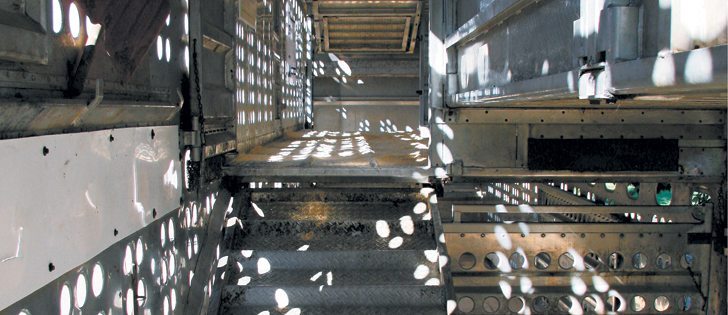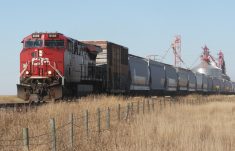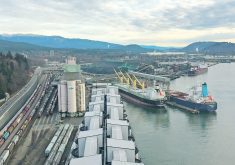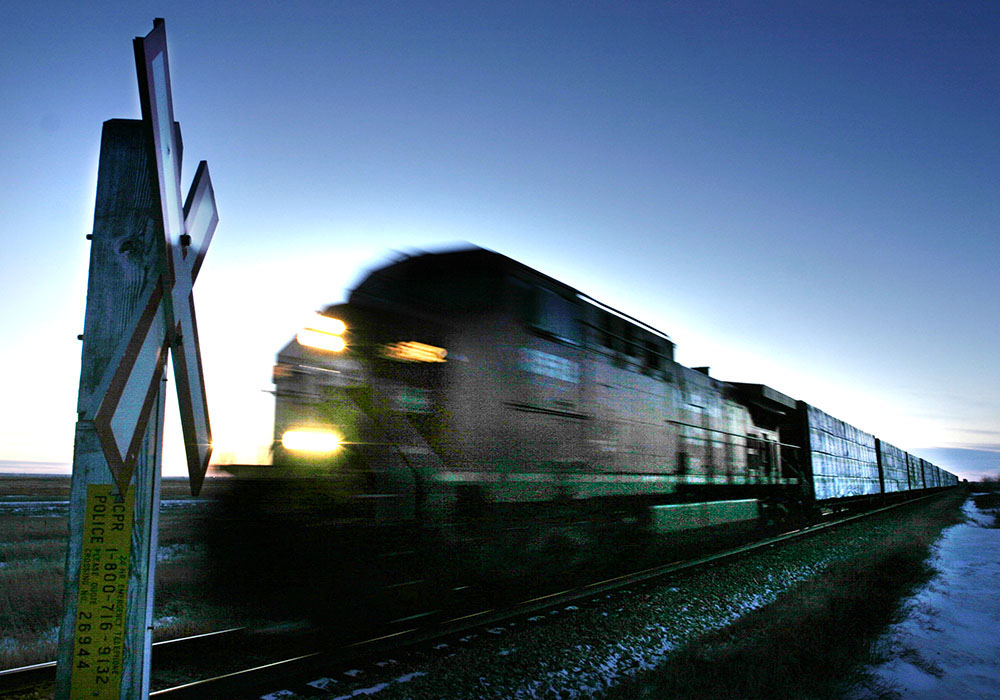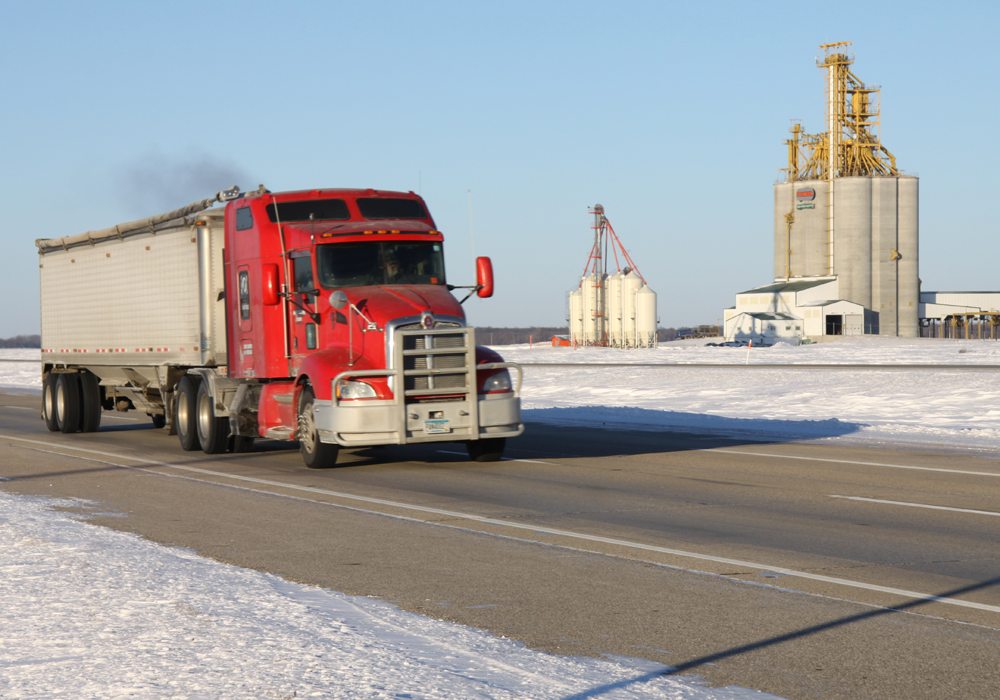Livestock injuries during transport can be avoided with safe handling techniques, understanding of animal behaviour
MANHATTAN, Kan. — Bruising among cattle is often connected to incidents during transportation.
A large share of the blame can be attributed to human error in the way cattle are handled from the time they are staged until they are moved onto a trailer, said Ron Gill, an extension livestock specialist at Texas A & M University.
“Sometimes we make loading and unloading trucks very difficult and make it out to be some big problem when it really is not. We should learn to manage the livestock and the people around it,” he said.
Read Also

Beef check-off collection system aligns across the country
A single and aligned check-off collection system based on where producers live makes the system equal said Chad Ross, Saskatchewan Cattle Association chair.
“Cattle are quieter if they think it was their idea to get on the trailer.”
Gill said a good understanding of cattle behaviour and proper personnel training in animal movement can help avoid injuries to livestock and people. Understanding what cattle need to stay safe can lead to better designed facilities with non-slip flooring, pens without sharp corners and ramps angled correctly to prevent bruising or more serious injuries from stumbling or falling, he added.
“Sometimes it is pretty ugly in the way we get stock loaded at that final moment,” he said at the Fifth International Symposium on Beef Cattle Welfare held at Kansas State University in Manhattan, Kansas, June 8-10.
“If those cattle are cramming onto that truck in a stressed manner, they are going to have bruises.”
More studies are showing how stressful transportation can be for all classes of cattle.
Tiffany Lee, a veterinarian and PhD candidate at Kansas State University, investigated the welfare of fed cattle during transportation. Her research found more bruises than expected because cattle are much larger than they were 20 years ago and truck design does not always accommodate bigger animals.
The study found a higher prevalence of bruising on more than 50 percent of the carcasses compared to 23 percent reported in the 2011 national beef quality audit. Many bruises were along the animal’s back.
“Oftentimes the areas where the bruising occurs is along that dorsal mid-line,” she said.
“That dorsal mid-line is where a lot of the expensive cuts are going to be.”
She found a significant correlation between trauma that happened during unloading and carcass bruise prevalence, which she called an animal welfare issue.
Her study group observed cattle being unloaded at plants and noted injuries to the back, shoulder, hip and rib areas. Another observer checked the carcasses and used the harvest audit program, which is a scoring system that uses a grid of nine sections where bruises are assessed as small, medium or large.
Colour of bruises was also noted. Yellow bruises are probably more than 48 hours old, so these were excluded from the data.
The study observed 9,860 head of cattle and counted traumatic events 20 percent of the time. However, they found almost 70 percent of carcasses were bruised in one of nine locations. Bruises on the dorsal mid-line were often of medium size, measuring five to 15 centimetres in diameter.
Processing plants cut bruises out of carcasses and dispose of them, which can result in considerable waste.
The research determined that the back bruises likely happened in the transport trailer rather than at the feedlot or in the slaughter plant holding areas.
The design of trailers has been the same for 20 years and the maximum height is 13 feet, six inches.
Some are a combination design, in which fat or feeder cattle may be hauled on two levels.
The floor of the upper compartment in a combination trailer has 69 inches of clearance and 66 inches in the belly section.
Ramps typically slide out from an upper deck, and a bracket that holds the ramps reduces the clearance space. Lee suspects the bracket rubs on the backs of the cattle as they move in and out.
“You basically have 55 and 5/8 inches clearance for those cattle coming up out of the belly and unloading,” she said.
“We have cows going in that are bigger than 57 inches, especially a Holstein.”
Trailers designed to haul only finished cattle are the same height, but the clearance room is slightly greater.
New trailer designs are possible to provide more clearance.
She said other risk factors on trailers also contribute to bruising, so more work is needed.
Canadian studies have been examining transportation stresses for eight years under the leadership of Karen Schwartzkopf-Genswein at Agriculture Canada’s research centre in Lethbridge.
Cattle may be upset because of rough handling, loading, unloading and commingling with new animals. They may go through an auction and have been cut off from feed and water.
Researchers know cattle lose weight during transport, but they have also noted injuries.
Feeder and fed cattle tend to handle transportation well with few incidents, but a recent study showed cull cows suffer more problems.
A 2015 study that was part of a PhD thesis for University of Calgary veterinarian Christie Goldhawk assessed 673 cull beef cattle transported during the winter from southern Manitoba to an Alberta slaughter plant. This is a 15-hour trip on average.
Researchers already knew more welfare issues occur when transport exceeds 30 hours. These animals tend to be more fragile and could end up lame, down or dead on the trailer.
There was a tendency to under-load these cows, and they ended up getting hurt more as they shifted around in the trailer. Some animals should never be shipped because they are in such poor shape they may not survive the trip.
“Even the best transporters, conditions and training cannot compensate for poor loading decisions,” Schwartzkopf-Genswein said.
They also checked the ride quality by measuring vibrations.
Lateral motion was greatest in the back of the trailer.
Assessments after slaughter found that 80 percent of all carcasses were bruised. Severe bruising was found on 18 percent and 14 percent were bruised in more than one location.
“These cattle are very susceptible. They bruise more easily than fat cattle, and we can see it more readily,” Schwartzkopf-Genswein said.
The most severe bruising occurred in cattle in the doghouse, which is the compartment in the back of a trailer’s upper deck.
Bruising increased if cattle had to wait to be unloaded.
Half the loads had at least one cow that was compromised in some way. Three cows went down and had to be euthanized on the trailer.
“Poor cow condition at loading is the biggest risk factor in determining the condition at off loading,” she said.




